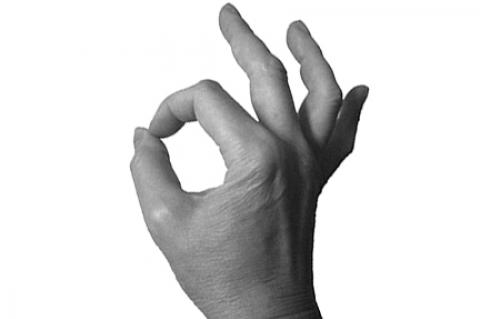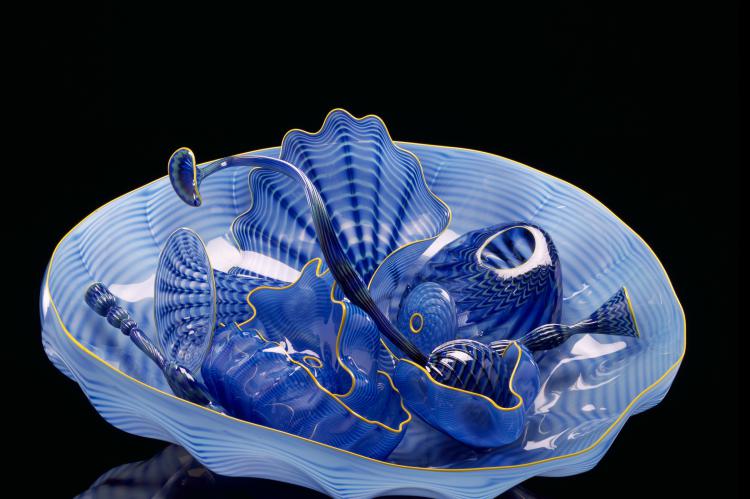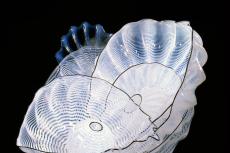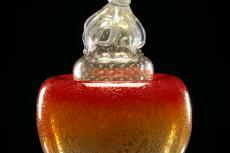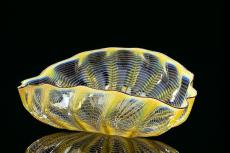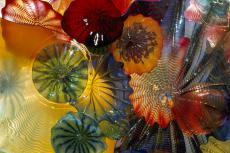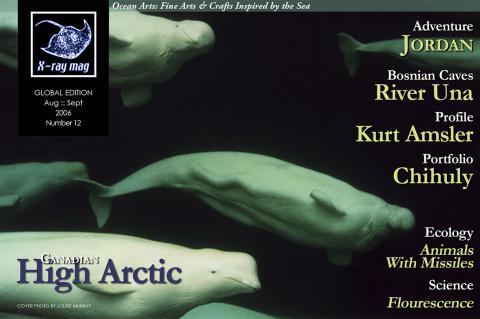C H I H U L Y
Effortlessly I glide through a sapphire sea, admiring sparkles on the underside of slick, moving wavelets rimmed with light, gently cupping an ephemeral bit of living jelly in my hand, then turning to glimpse a dazzling sight: corals, sponges, anemones, in a riot of soft pinks, blazing reds, luminous oranges, all marked with the disciplined wildness that I love in nature—and in the Seaforms. I want to touch my tongue to the ice-clear blue smoothness of one, taste the colors allow the texture to merge with the skin of my fingertips, feel the links between humankind and that realm where most of life on earth is concentrated—the sea.
— Sylvia Earle on Chihuly Seaforms
Tags & Taxonomy
Known for his organic forms and environmentally sensitive creations, Chihuly has also created glass installations for various environments beyond the conventional gallery including bridges, glass houses and botanical gardens in the US, the Royal Gardens in London, the canals and piazzes of Venice and the Tower of David Museum in Jerusalem where over one million visitors came to see his work. In these installations, the artist juxtaposed monumental,organically shaped sculptural forms with beautiful landscaping and established an immediate and direct interaction between art and nature.
Chihuly was born in Tacoma, Washington, USA, in 1941 and was introduced to the glass arts while studying interior design at the University of Washington. Upon graduating, Chihuly enrolled in the first glass arts program in the country at the University of Wisconsin. At the Rhode Island School of Design, he continued his studies. It was at this school where Chihuly established a glass program and taught for more than a decade.
A change in his creative process came when, in 1968, Chihuly was awarded a Fulbright Fellowship to work at the Venini factory in Venice, Italy. While in this beautiful city, Chihuly observed the team approach to blowing glass. This team approach was to become a critical element in the way Chihuly works today. Shortly after the fellowship, Chihuly cofounded Pilchuck Glass School in Washington in 1971. Since then, Chihuly, with his international glass center, has led the avant-garde in the development of glass as a fine art.
Seaforms
Chihuly developed the Seaforms series over time. The forms, which have reappeared in ever-evolving configurations since 1971, allude to Chihuly’s childhood in Tacoma, where he developed a love of the sea and recognized its importance to the Pacific Northwest economy.
With the Seaforms series, Chihuly investigates the play of natural light on and within glass, finding ways to exploit its translucency and transparency. The effect is breathtaking and draws forward, in an almost tactile manner, the delicate fragility and fluid elegance of nature and life under the waves of the sea. In a video clip on his website, Chihuly explains, “Glass is defined as a super-cooled liquid that is transparent like water. So, the idea that the [Seaform] objects look like they come from the sea is no accident. They are almost like water itself.”
Chihuly goes on to say that animals and plants in the sea often look similar, and that in the sea, everything has an organic and moving quality. Marine life is often very transparent like the water in which they live.
At the time of the development of the Seaforms, the artist was experimenting with making glass thinner and more transparent without losing its strength. He used an optical mold which gives glass a texture like corrogated cardboard and makes the glass thinner and stronger. He found that when the glass was blown with this corrogated pattern, it looked like a seashell. So, the basket-like creations he made with this corrogated glass naturally became seaforms.
Chihuly continued to push the glass to get a more aquatic feeling and take the developing Seaforms into different directions. For instance, by creating and using a new mold with fins, it made the glass forms look like sea anemone.
Always artistically inquisitive, Chihuly, wanted to see what some of these new Seaforms looked like under water, so he placed them in the lap pool in his studio. Thereby, one could swim over the forms as if swimming over a natural reef. The artist likes to juxtapose the man-made and the natural. So, when people look at the Seaforms under the water, they wonder, “Are they man-made, or did they come from nature?”
Chihuly says that this is an important part of his work ...
(...)
Download the full article ⬇︎
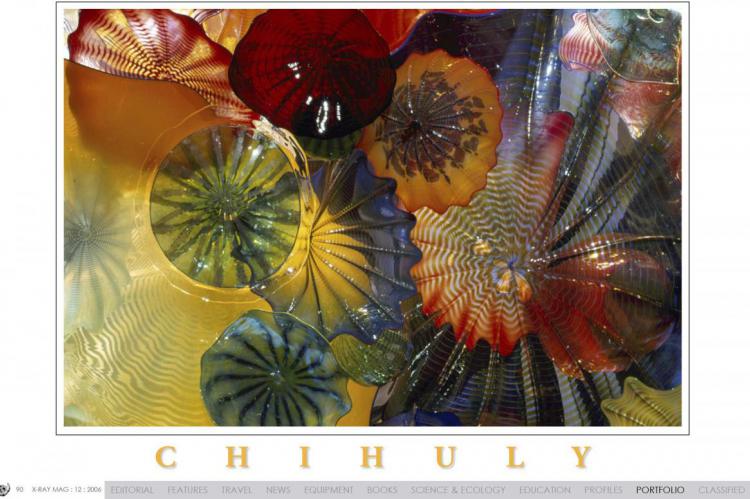
Originally published
X-Ray Mag #12
From cool blue wilderness of the Canadian high Arctic to the red hot deserts of Jordan - from Beluga whales close to magnificent wrecks. Also in this issue lots of Ocean Art including Chihulys Seaforms. Vi have a talk with photographer Kurt Amsler and AP Valves Martin Parker. Dives: 200m on CCR in Thailand and explore caves in Bosnia. Technique: Leigh Cunningham tells why we should watch our partial pressure and Jason Heller and Dan Beecham explains how we can rig your photogear.
Lots of other news and new gear too - as always.

